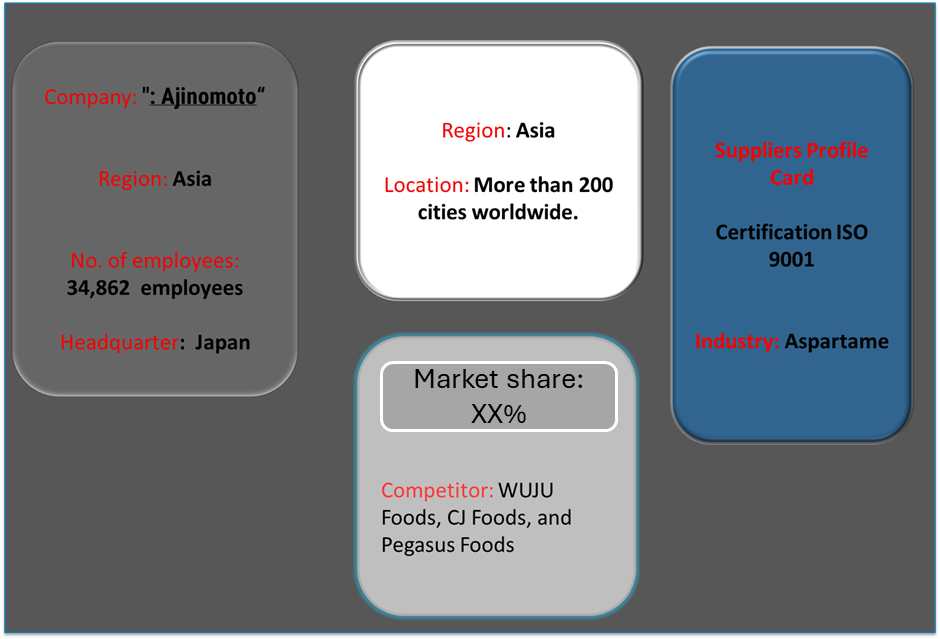Bearings Market Latest Industry Overview
The global bearings market is witnessing steady growth, fueled by advancements in manufacturing technologies, rising demand across industrial sectors, and increased investment in R&D. This market caters to applications in automotive, aerospace, and heavy machinery. Our analysis highlights emerging procurement trends, emphasizing cost efficiency through strategic partnerships and the adoption of advanced technologies to streamline operations.
Future challenges include accurate demand forecasting, supported by digital procurement tools to improve agility in a dynamic market. Strategic sourcing and efficient procurement management are crucial for optimizing operations and ensuring product quality. As competition intensifies, companies are leveraging market intelligence and procurement analytics to enhance supply chain performance and maintain a competitive advantage.
The bearings market outlook is robust, with growth expected through 2032 due to several key factors:
- Market Size: The global bearings market is projected to reach approximately USD 97.10 Billion by 2032, with a CAGR 9.5% from 2024 to 2032.
- Sector Contributions: Growth is primarily driven by:
- Automotive Industry: Increasing demand for high-precision bearings in electric and autonomous vehicles is accelerating market growth.
- Manufacturing and Heavy Machinery: Rising use of bearings in machinery for smooth operations and durability is expanding market demand.
- Investment Initiatives: Companies are prioritizing sustainable production techniques and advanced manufacturing to enhance product quality and reduce environmental impacts.
- Regional Insights: The Asia-Pacific region is witnessing rapid growth in demand, supported by industrial expansion, technological advancements, and commitments to sustainable manufacturing practices.
Key Trends and Sustainability Outlook:
Stringent Quality Standards: Global quality and safety standards are increasing the demand for certified, high-quality bearings.
Technological Advancements: Innovations in bearing design and materials are enhancing durability, performance, and operational efficiency.
Rising Demand for Precision Bearings: Demand for precision-engineered bearings is growing in high-performance applications, especially in aerospace and automotive.
Sustainability Initiatives: Companies are adopting eco-friendly practices in sourcing, production, and packaging to minimize environmental impact.
Digital Transformation: Digital automated in supply chain and inventory management improve efficiency, traceability, and quality assurance.
Growth Drivers:
- Industrial Expansion: The growth of industrial sectors globally is driving demand for bearings in machinery and equipment.
- Stringent Quality Regulations: Increased regulations for quality and safety are boosting demand for rigorously tested, durable bearings.
- Demand for Precision and High-Performance Bearings: The need for high-performance bearings in advanced applications fuels market expansion.
- Focus on Environmental Responsibility: The shift toward sustainable production practices promotes the use of responsibly sourced and processed bearings.
- Innovative Manufacturing Technologies: Advances in production methods enhance bearing quality, performance, and market competitiveness.
Overview of Market Intelligence Services for the Bearings Market
Recent analyses indicate that the bearings market is encountering challenges with increasing manufacturing and operational costs, driven by the complexity of bearing technologies and strict quality standards. Market reports provide detailed cost projections and identify opportunities for procurement savings, enabling companies to manage cost fluctuations while maintaining high-quality production. By leveraging these insights, stakeholders can implement cost-saving strategies and enhance procurement processes, ensuring efficiency and compliance in a competitive and evolving market.
Procurement Intelligence for Bearings: Category Management and Strategic Sourcing
To stay competitive in the bearings market, companies are optimizing procurement strategies by using spend analysis tools for tracking supplier expenses and improving supply chain efficiency through market intelligence. Effective category management and strategic sourcing are vital for cost-efficient procurement and ensuring the timely availability of high-quality bearings for various industrial applications.
Pricing Outlook for Bearings: Spend Analysis
The pricing outlook for bearings is expected to remain stable overall, though slight increases may occur due to several influencing factors. Rising production costs, driven by expenses associated with raw materials like high-quality steel, investments in advanced manufacturing equipment, and stringent quality standards, are key contributors to potential price adjustments. As demand for durable, high-performance bearings grows in sectors like automotive, aerospace, and heavy machinery, these elevated production costs could exert upward pressure on bearing prices.
Graph shows general upward trend pricing for bearings and growing demand. However, there may be fluctuations influenced by economic conditions, technological advancements, and competitive dynamic.
Efforts to boost efficiency in bearing production and optimize supply chains may help stabilize or even reduce costs in the long run. Additionally, forming strategic partnerships within the industry—such as collaborations with sustainable material suppliers or technology innovators—can unlock cost-saving measures across sourcing and production.
Although rising raw material and labor costs pose challenges, a focus on sustainability, technological advancements, and strategic partnerships allows the industry to manage pricing more effectively.
As customers increasingly demand high-quality, long-lasting, and responsibly sourced bearings, maintaining competitive pricing while upholding quality standards and sustainability will be crucial for manufacturers and suppliers.
Cost Breakdown for the Bearings Total Cost of Ownership (TCO) and Cost Saving Opportunities:
- Research Materials (45%)
- Description: Raw materials, primarily high-grade steel and specialty alloys, make up around bearing production costs. These materials are crucial for achieving the durability, precision, and strength needed for bearing applications across industries like automotive, aerospace, and manufacturing.
- Trends: Prices for steel and alloys have been rising due to global supply chain disruptions and increasing demand for high-strength materials. The trend toward sustainable and recycled materials is also influencing raw material sourcing, with manufacturers seeking eco-friendly options to meet environmental standards and consumer expectations.
- Labor (XX)
- Description: XX
- Trends: XX
- Manufacturing Technology (XX%)
- Description: XX
- Trends: XX
- Infrastructure & Overheads (XX%)
- Description: XX
- Trends: XX
Cost Saving Opportunities: Negotiation Lever and Purchasing Negotiation Strategies
Optimizing procurement and operational strategies offers significant cost-saving potential in the bearings sector. By establishing collaborative partnerships with suppliers and industry stakeholders, bearing manufacturers can leverage shared resources and benefit from economies of scale, reducing individual costs. These alliances also enhance negotiating strength, leading to better pricing and favoadvanced manufacturing technologies boosts efficiency and minimizes waste. Automation and precision machinery streamline processes, improve product quality, and lower operational expenses. Sustainable practices, such as sourcing eco-friendly materials and implementing green production methods, further reduce raw material costs and attract environmentally conscious clients, strengthening brand reputation.

Supply and Demand Overview for Bearings: Demand-Supply Dynamics and Buyer Intelligence for Effective Supplier Relationship Management (SRM)
The bearings market is witnessing robust growth, driven by increasing demand in automotive, industrial machinery, and aerospace sectors. Demand is particularly strong due to the need for durable and precision-engineered components, supported by collaborations between manufacturers, suppliers, and engineering firms.
Demand Factors:
- Industrial Growth: As sectors like automotive, aerospace, and manufacturing expand, demand for high-quality bearings rises to support efficient, reliable machinery.
- Technological Advancements: Increasing integration of precision-engineered bearings in automated systems, robotics, and electric vehicles is driving demand for durable, high-performance products.
- Focus on Durability: Industries are demanding bearings with longer life spans to minimize downtime and maintenance, increasing demand for advanced, high-quality materials and engineering.
- Sustainability Preferences: Growing environmental awareness prompts demand for eco-friendly bearings made from sustainable materials, appealing to environmentally conscious buyers.
Supply Factors:
- Raw Material Availability: The supply of bearings depends on the availability and cost of high-quality steel and specialty alloys, which influence production timelines and pricing.
- Production Capacity: Manufacturers are enhancing production through efficient facility management and automation, improving the supply of high-precision bearings.
- Technological Advances: Innovations in production methods, such as CNC machining and automated inspection, increase manufacturing speed and quality, stabilizing supply.
- Regulatory Standards: Strict quality and safety regulations in various regions influence bearing production and may impact costs and supply levels, especially for export markets.
Regional Demand-Supply Outlook Bearings:
The Image show growing demand for bearings in both Asia pacific and north America, with potential price increases and increased Competition
Asia Pacific: Dominance in Apples
Asia-Pacific Market Strength: The Asia-Pacific region, particularly India, China, and Japan, is a dominant player in apples characterized by:

- Growing Industrial Demand: The region’s industrial expansion is increasing demand for high-quality bearings, especially in automotive, manufacturing, and heavy machinery applications, which require reliable performance and durability.
- Strong Manufacturing Infrastructure: Asia-Pacific’s established network of bearing production facilities and distribution channels supports consistent supply, ensuring product availability to meet market demand.
- Supportive Regulations: Favourable industrial policies, safety standards, and quality certifications in countries like China and India create a positive regulatory environment, encouraging bearing production for both local and export markets.
- Innovation Focus: The region’s bearing industry is adopting advanced manufacturing technologies, including automation and quality inspection systems. These innovations enhance production efficiency, reduce costs, and ensure that high-quality bearings reach the market effectively.
Supplier Landscape: Supplier Negotiations and Strategies
The supplier landscape in the bearings market is vast, with numerous global and regional manufacturers offering a wide range of bearings for various industries. These suppliers significantly influence market dynamics, impacting pricing, innovation, and product availability. The market is highly competitive, with established companies dominating key segments while smaller and emerging suppliers focus on niche applications and advanced materials.
Currently, the landscape shows a trend of consolidation among leading manufacturers, increasing their market share. However, smaller suppliers are gaining ground by targeting specific industries and leveraging innovative designs.
Some key suppliers in the bearings market include:
- Timken
- Schaeffler Group
- NSK
- NTN Corporation
- JTEKT Corporation
- RBC Bearings
- Regal Rexnord
- Minebea Mitsumi
- SKF

Key Developments Procurement Category Significant Development:
|
Bearings Attribute/Metric |
Details |
|
Market Sizing |
The global bearings market is projected to reach approximately USD 97.10 Billion by 2032, with a CAGR 9.5% from 2024 to 2032. |
|
Bearings Technology Adoption Rate |
Nearly 50% of industries are incorporating advanced materials and smart bearings to enhance performance and durability. |
|
Top Bearings Strategies for 2024 |
Focus on energy-efficient designs, expanding product portfolios, and leveraging predictive maintenance technologies. |
|
Bearings Process Automation |
About 40% of manufacturers have automated production and quality control to boost efficiency and ensure precision. |
|
Bearings Process Challenges |
Challenges include fluctuating raw material costs, maintaining high precision, and meeting evolving industry standards. |
|
Key Suppliers |
Leading suppliers include SKF, Timken, Schaeffler Group, NSK, and NTN Corporation, offering diverse bearing solutions |
|
Key Regions Covered |
North America, Europe, and Asia-Pacific, with strong markets in the U.S., China, Japan, and Germany, supported by industrial growth and advanced manufacturing. |
|
Market Drivers and Trends |
Growth is driven by industrial automation, rising vehicle production, and demand for sustainable and high-performance solutions. |
Frequently Asked Questions (FAQ):
Our procurement intelligence services offer insights into the bearing’s supplier landscape, identifying key players. We provide spend analysis, supplier evaluations, and market insights to help source cost-effective and high-quality bearings.
We assist in evaluating TCO for bearings by considering material costs, maintenance, lifecycle performance, and operational efficiency, offering a clear view of long-term financial impacts.
We provide a framework to address risks like supply chain disruptions, fluctuating raw material prices, and supplier reliability, ensuring smooth procurement processes.
Our Supplier Relationship Management (SRM) services focus on collaboration, favourable contracts, and consistent quality assurance to strengthen relationships with bearing suppliers.
We highlight best practices like supplier categorization, competitive pricing strategies, and robust contract management to enhance procurement efficiency.
Digital tools streamline procurement through automation, analytics, and real-time supplier performance tracking to optimize sourcing strategies.
Our tools help monitor supplier performance, ensuring they meet quality, delivery, and compliance standards, improving procurement decisions.
Using market insights, we support negotiations to secure competitive pricing, volume discounts, and flexible payment terms.
Our tools provide data on global trends, supplier market share, and price forecasts to support informed procurement choices.
We guide compliance with industry standards, ensuring suppliers meet safety, performance, and sustainability requirements.
Strategies like contingency planning and backup supplier options help maintain continuity during disruptions.
Our tracking tools monitor quality, delivery timelines, and compliance, aiding future procurement strategies.
We help identify suppliers with sustainable practices and evaluate their adherence to environmental and ethical standards.
Pricing analysis compares costs across suppliers, identifies trends, and supports negotiations for the best value.








